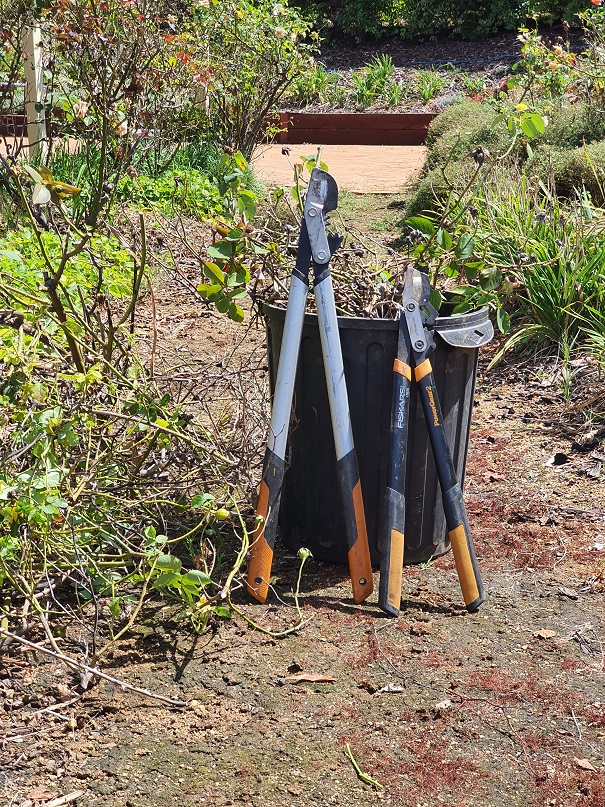
24 Feb Roses
Most roses at this time of year have finished or are finishing off their summer season of blooms so now is the best time to do a prune so you can encourage more flowers in autumn.
Roses normally need at least two designated prunes a year.
- The winter prune is when you focus on shaping and reduction in size.
- Whilst the late summer/early autumn prune is more for a general care and tidy up. If you can do regular dead heading on roses throughout the year it will mean that the late summer/early autumn prune is quite straight forward. Roses need this prune now to bring on more flowering and also to maintain their overall shape. It is also a good time for you to check your roses for any pest or diseases as well so they can be treated.
If you had completed a thorough prune on them in winter then the summer prune will be easy however if you did happen to miss that winter prune now is also the time you could complete a slightly harder reduction prune on them.
At this time of year you should at a minimum aim to prune the dead flowers off the plant. Cut these dead flower heads back down to one or two leaves below the flower. You should then remove any dead, diseased or dying wood on the rose bush.
These affected stems should be removed back down to the main trunk, to a side branch, an axillary bud or to ground level.
What tools to use?
When it comes to do any rose pruning or any work in the garden for that matter, you should attempt to have the right tools for the job. These tools can vary between gardeners depending on what you like to use, it all comes down to personal taste.
I always like to use the following tools;
Long handed and short handed loppers
The two different lengths in handles allows you to reach into different sections of the rose bush depending on their size. Also the different thickness or width of the rose stem may require some extra leverage for cutting.
Pruning saw
I use this almost as much as my secateurs. The saw allows you to get into tight areas where your secateurs can’t reach.

Long sleeved gloves
These can protect your arms and clothing from the spiky rose thorns. I have an aversion to spiky plants. It is just not fun spend all of the day getting spiked in every direction whilst you are trying to do a garden task so wearing some extra protection will definitely help you work a bit quicker.
Secateurs
My Felco No 2 secateurs are my ultimate favourite garden tool of all time! If you speak to many gardeners especially those who garden professionally you will know that a pair of secateurs are a very personalised item one that I can’t live without. It is the only item in my garden tool kit that I would not share or lend out. I have a strong attachment to mine and they are moulded to my hand shape so much that when you are completing a lot of pruning they feel like an extension of your hand. You always need to ensure they are sharp and the fittings are tightened before you do any large amounts of pruning

Fertilise your Roses
Roses should be fertilised after pruning or even if you don’t prune add some organic fertiliser such as Neutrog’s Sudden Impact for Roses to give them a feed before the flush of flowers in Autumn. Always water before and after feeding.


